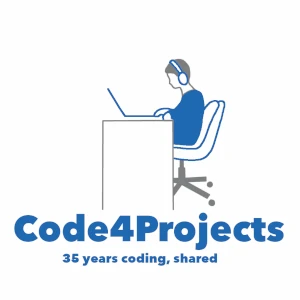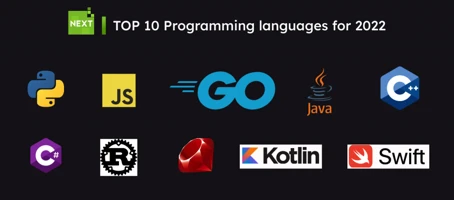
The Top Programming Languages to Learn in 2023: A Comprehensive Guide
Posted on 29 Jan 2023
Programming languages to watch out for in 2023
The world of programming is constantly evolving, and new languages, frameworks, and technologies are being introduced all the time. With so many options to choose from, it can be difficult to decide which programming languages to learn and invest your time in.
In this article, I will discuss some of the best programming languages to study in 2023, and provide an overview of each language, including its uses, applications, and pros and cons.
The languages that will be covered in this article are:
- Python
- C
- C++
- Java
- JavaScript
- PHP
- C#
- Visual Basic
- Go
These languages are considered to be among the most in-demand and widely used programming languages in the industry and are great choices for different use cases.
This list was compiled using a mix of the TIOBE index and my experience in the industry. TIOBE is a measure of the popularity of programming languages. It is calculated based on the number of search engine results for queries of programming language tutorials, courses, and examples. I’ve been working in the IT branch for over 24 years and I want to give my point of view on why these languages can be worth studying.
Python: The Swiss Army Knife of Programming Languages
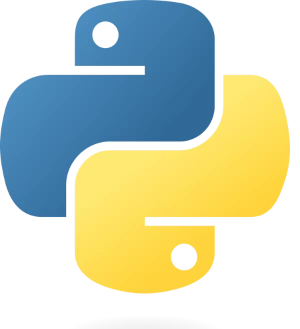
Photo from Wikimedia
Python is a high-level, general-purpose programming language that is widely used for web development, data analysis, artificial intelligence, and scientific computing. It was first released in 1991 by Guido van Rossum, and has since grown to become one of the most popular and widely used programming languages in the world.
One of the main reasons for Python’s popularity is its simple and easy-to-read syntax, which makes it a great choice for beginners. Python code is often described as “readable” and “expressive”, which makes it easy to understand and write, even for those with little programming experience. Moreover, Python supports various programming styles, including object-oriented programming (OOP) through the use of objects and classes.
Python is also known for its vast ecosystem of libraries and frameworks, which makes it a versatile language that can be used for a wide range of applications. Some of the most popular libraries and frameworks include NumPy and SciPy for scientific computing, Pandas for data analysis, and Django and Flask for web development.
Python is also supported by a large and active community of developers, which means that there are plenty of resources available for learning and development, including tutorials, documentation, and forums. This makes it easy for developers to find the help and support they need when working with Python. Additionally, the syntax of python is similar to the English language, making it easy to read and understand, which can make the debugging process much easier.
In terms of drawbacks, Python is not the best choice for applications that require low-level memory manipulation or high-performance computing, as its interpreted nature can cause it to be slower than other languages like C++ or Rust. However, Python’s simplicity and readability make it a great choice for beginners and it’s also a great choice for small to medium-sized projects.
In my daily job, I used Python a lot of the time, Patroni is a Python cluster manager that I use to create highly available PostgreSQL clusters for my company solutions. I use Python to monitor my investments in ETFs and several other projects.
C: The Language of Systems and Embedded Applications
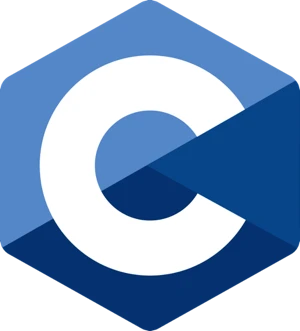
Photo from Wikimedia
C is a general-purpose, low-level programming language that was first developed in the early 1970s by Dennis Ritchie at Bell Labs. C is a highly efficient language that is well-suited for systems programming and embedded applications. It is a compiled language, which means that the code is translated into machine code before it is executed, making it faster than interpreted languages like Python or JavaScript.
C is widely used for developing operating systems, device drivers, and embedded systems. It is also commonly used in the development of low-level libraries and frameworks, such as the C Standard Library, which provides a set of standard functions for input/output, math, and string manipulation. C is also commonly used in the development of game engines, as well as in the implementation of other performance-critical systems.
C is a powerful language that provides low-level access to the computer’s hardware, which allows for fine-grained control over the system’s resources. However, this low-level access also means that C is a complex language that requires a deeper understanding of the system’s architecture and can be more prone to errors if not used correctly.
Even if C has been around for several decades, it is a timeless language because it always manages to carve out a niche where performance is a must. The C language was the second programming language I learned in the last years of ‘80. I used it to create games, small libraries, small kernels, client applications, and so on.
C++: The Language of Object-Oriented Systems and High-Performance Applications
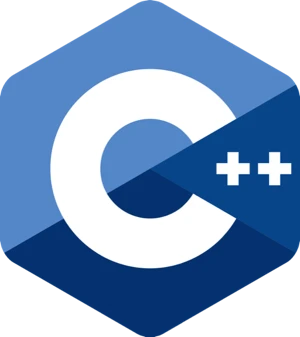
Photo from Wikipedia
C++ is an extension of the C programming language, developed by Bjarne Stroustrup in the early 1980s. It is a general-purpose, high-level programming language that is widely used for systems programming, and for creating high-performance applications such as video games, simulations, and scientific applications. C++ is a compiled language, which means that the code is translated into machine code before it is executed, making it faster than interpreted languages like Python or JavaScript.
C++ is an object-oriented language, which means that it allows developers to define and manipulate objects, which are instances of classes. This feature allows for the creation of reusable and modular code, making it easier to maintain and develop complex systems. C++ also offers a wide range of features such as templates and overloading operators, which make it more powerful than C.
C++ is widely used in game development, as well as in the creation of other high-performance applications such as simulations, financial modeling and scientific calculations. C++ also has a wide range of libraries and frameworks, such as the Standard Template Library (STL) and Boost, that provide a set of standard functions for input/output, math, and data structures.
C++ is a complex language that requires a deeper understanding of the system’s architecture and can be more prone to errors if not used correctly. Additionally, the use of pointers and manual memory management can make it more prone to security vulnerabilities.
I started using this language as a hobby by creating small compilers. It was the first programming language I used when I started working in 1999. I remember that my first job was to develop an encryption library, then I developed other libraries in the configuration, networking, and directory services areas.
Java: The Language of Enterprise Applications and Android Development
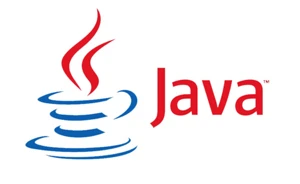
Photo from Wikipedia
Java is a general-purpose, high-level programming language that was first developed by James Gosling at Sun Microsystems in the early 1990s. It is a compiled language, which means that the code is translated into machine code before it is executed, making it faster than interpreted languages like Python or JavaScript.
Java is an object-oriented language, which means that it allows developers to define and manipulate objects, which are instances of classes. This feature allows for the creation of reusable and modular code, making it easier to maintain and develop complex systems. Java also offers a wide range of features such as automatic memory management and exception handling, which make it more powerful than C++.
It is widely used in enterprise application development, as well as in the creation of Android mobile applications. Java also has a wide range of libraries and frameworks, such as the Java Standard Library and Spring, that provide a set of standard functions for input/output, math, and data structures.
Java is a popular language for building enterprise applications, due to its cross-platform compatibility, and its ability to scale to large systems. Additionally, Java has a large and active community of developers and a wide range of libraries and frameworks that make it easier to build robust and secure applications.
The language may present some drawbacks such as its verbosity, and the fact that it can be less efficient than other languages like C++ when it comes to performance-critical applications.
Working in a big company this is the language I used the most especially to create server-side applications using web containers. However, I used it a lot also for hobbies.
JavaScript: The Language of the Web
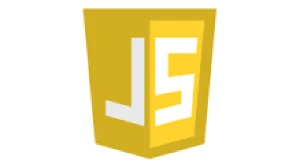
Photo from Freepnglogos.com
JavaScript is a high-level, dynamic programming language that is widely used for building interactive and responsive web applications. It was first created in 1995 by Brendan Eich and has since become one of the most widely used programming languages in the world. JavaScript is primarily used in the browser, but can also be used to write code on the server side using Node.js.
JavaScript is a versatile language that can be used for a wide range of applications, including front-end web development, server-side development, and mobile app development. It is particularly well-suited for building interactive and responsive web applications, as it allows developers to create dynamic user interfaces and add interactive elements to web pages, such as drop-down menus, sliders, and pop-ups.
JavaScript is also supported by a large and active community of developers, which means that there are plenty of resources available for learning and development, including tutorials, documentation, and forums. Additionally, JavaScript has a wide range of libraries and frameworks, such as React, Angular, and Vue.js, that make it easier to build complex web applications.
When using JavaScript on the server-side using Node.js, developers can build scalable and high-performance web applications, as Node.js uses an event-driven, non-blocking I/O model. This makes it easy to handle multiple requests simultaneously and allows for faster server-side processing, making Node.js a popular choice for building real-time web applications and APIs.
One of the main drawbacks of JavaScript is that it is a loosely typed language, which can make it more prone to errors and harder to debug. Additionally, JavaScript’s dynamic nature can make it difficult to catch errors at compile time, and it can also lead to unexpected behavior.
In my career, I have worked a lot as a back-end developer and very little on front-end activities. The latter I mostly worked on hobby businesses like this calculator or this website.
C#: The Language of Windows and Unity Development
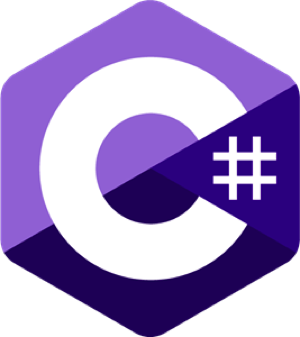
Photo from Seeklogo.com
C# is a modern, object-oriented programming language developed by Microsoft in 2000 as part of its .NET Framework. The language is designed for building Windows desktop applications and games, as well as for developing apps for Windows, Android, and iOS using the Xamarin framework. C# is a statically-typed language, which means that variables must be declared with a specific type before they can be used. This provides a level of type safety and can help prevent bugs during the development process.
C# is a versatile language that can be used for a wide range of tasks, including web development, database programming, and game development. C# has a large and active community of developers, and the .NET framework provides a wealth of libraries and frameworks that make it easier to build robust and secure applications. Additionally, C# has a strong focus on developer productivity, providing features such as automatic memory management and support for functional programming.
C# is particularly well-suited for Windows desktop development and Windows Store app development. It is also popular among game developers, as it is the primary language used for Unity, one of the most popular game engines in the market.
However, C# can be less efficient than other languages like C++ when it comes to performance-critical applications, and its use is limited to Windows development.
Visual Basic: The Language of Rapid Application Development
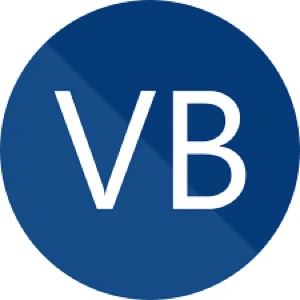
Photo from Wikipedia
Visual Basic (VB) is a programming language developed by Microsoft in 1991. It is a high-level, object-oriented language that is designed to make it easy to build Windows desktop applications and scripts. VB is a language that is easy to learn and use, making it a popular choice for beginners and those who need to quickly create simple applications.
Visual Basic is often used for rapid application development (RAD) and is well-suited for creating simple and small applications, including business applications and scripts. It is particularly useful for creating applications that have a simple user interface, such as forms and dialog boxes, and it is also often used for automating Microsoft Office applications.
One of the main strengths of Visual Basic is its simple and intuitive nature. It is a language that is easy to learn and use, and its drag-and-drop interface makes it easy to create graphical user interfaces (GUIs) quickly and efficiently. Additionally, VB has a wide range of libraries and tools that can be used to create Windows applications and automate tasks.
However, Visual Basic has been largely replaced by .NET languages like C# and VB.NET in recent years, and its use is limited to maintaining legacy applications and automating tasks on Microsoft Office.
PHP: The Language of Web Development
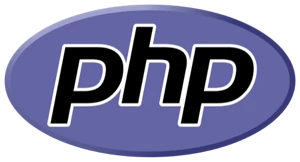
Photo from Wikipedia
PHP is a server-side scripting language that was first created by Rasmus Lerdorf in the mid-1990s. It is a popular language for web development, as it is designed to work seamlessly with HTML, CSS, and JavaScript to create dynamic and interactive web pages. PHP is an interpreted language, which means that the code is read and executed line by line at runtime, making it slower than compiled languages like C or Java.
PHP is a versatile language that can be used for a wide range of web development tasks, such as creating dynamic content, handling forms, and working with databases. PHP also has a wide range of libraries and frameworks, such as Laravel and CodeIgniter, that provide a set of standard functions for web development and make it easier to build robust and secure web applications.
PHP is a popular choice for web development, due to its simplicity and ease of use. Additionally, the majority of web servers support PHP, which makes it easy to deploy and run web applications. PHP also has a large and active community of developers, which provides a wealth of resources and support for developers. Moreover, PHP is the WordPress programming language that is the most popular CMS in the world. Statistics mention that WordPress manages the 43% of websites around the world (810 million).
However, PHP has some limitations as a language, and its performance can be affected when working with large amounts of data or high traffic. Additionally, it is not a particularly good choice when it comes to complex and large-scale applications.
I have been running a WordPress blog since 2006 and have written several PHP codes to customize my websites. Unfortunately, today I have few opportunities to work on this language because I migrated my sites to Jekyll.
Go: A High-Performance Language for Modern Applications
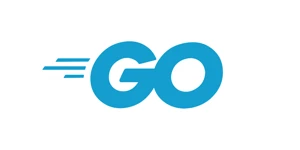
Photo from https://www.vectorlogo.zone/
Go, also known as Golang, is a programming language developed by Google in 2009. It is designed to be simple, efficient, and easy to learn. Go is particularly well-suited for building high-performance network services and distributed systems. It also has built-in garbage collection, concurrency support, and strict typing. This makes it a great choice for building modern, scalable, and efficient applications.
Go is an open-source language and has a growing community, this makes it easy to find tutorials, libraries, and frameworks to start developing. It’s also used by many big companies such as Google, Uber, Netflix, and others.
One of the main advantages of Go is its built-in concurrency support through goroutines, which are lightweight threads that can run concurrently with other goroutines. This makes it easy to handle multiple requests simultaneously and allows for faster server-side performance. Go also has a strong focus on simplicity and minimalism, making it a great choice for beginners and experienced developers alike.
One downside of Go is that it doesn’t have built-in support for generics, which is a feature that allows a function or a data type to work with multiple types of data. This can make some tasks more complex to implement, and it’s something that developers have to take into account when choosing this language.
Overall, Go is a high-performance language that is well-suited for building modern, scalable, and efficient applications. With its built-in concurrency support, garbage collection, and strict typing, it’s a great choice for building high-performance network services and distributed systems.
The Go language occupies a not-too-high position in the TIOBE index, however, I wanted to add this language to this list because I notice that more and more it is used to write code for Cloud services and all the applications where performance is a MUST.
Conclusions
In conclusion, the programming landscape is constantly evolving, and the choice of which language to learn depends on the specific needs and goals of the developer. In this article, we have discussed some of the most popular and widely-used programming languages that are worth studying in 2023. We have explored the strengths and weaknesses of each language and highlighted the types of applications for which they are best suited.
With my point of view from inside the IT world I also wanted to give a contribution to the languages that I have noticed are most used in this industry.
Ultimately, the best language to learn is the one that meets your specific needs and goals. It’s important to consider the types of projects you want to work on and the industries you want to work in, as well as the resources available in your community. With the right language and the right resources, you can achieve your goals and build the applications you’ve always dreamed of building. Whether you are a beginner or an experienced developer, there is a programming language out there for you.
